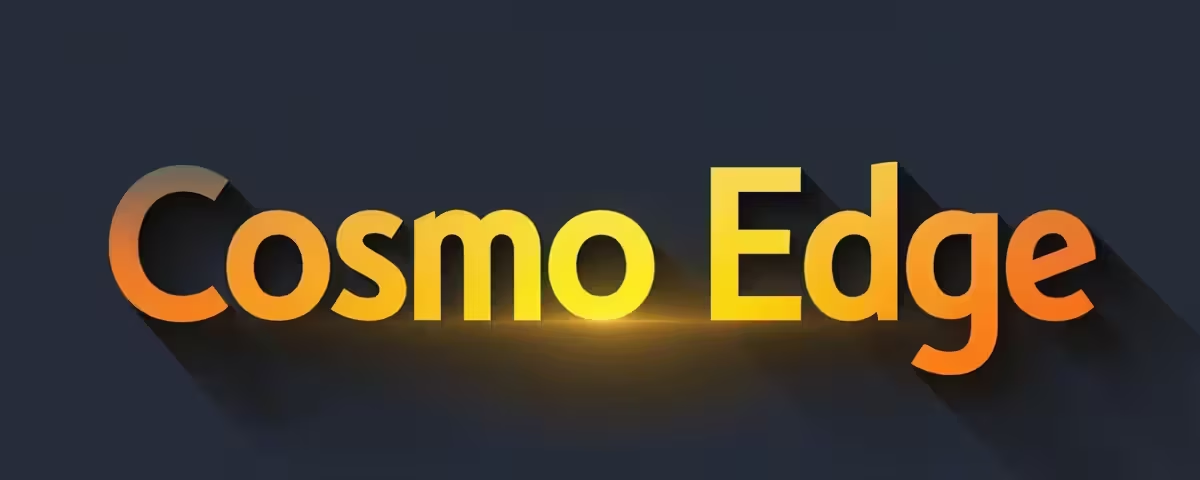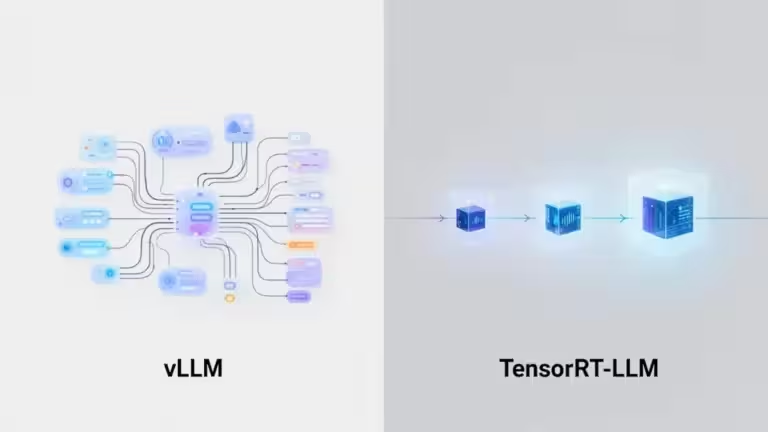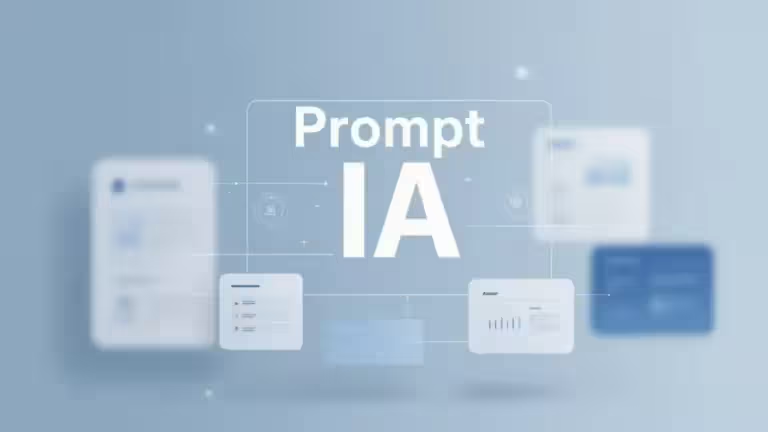Pomelli vs Canva: Experiment or Revolution?
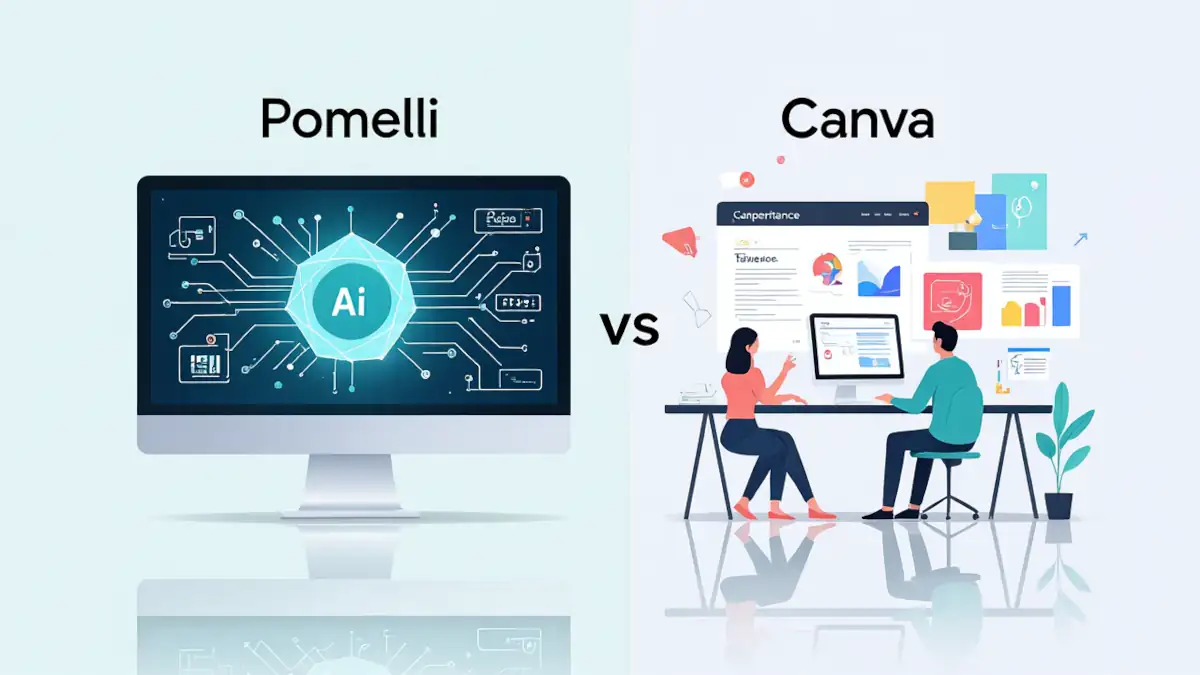
AI-assisted design is entering a new phase. While Canva has dominated the simplified design market for a decade, Pomelli AI, an experimental project from Google Labs and DeepMind, takes a radically different approach: automating the entire marketing creation pipeline. Two visions are clashing, the one of creative assistance and the one of total automation, with the same goal: to redefine visual content creation in the age of generative AI.
Also read: Pomelli AI: Google bets on automated marketing for small businesses
Two opposing philosophies of AI-assisted creation
Canva, the pioneer of democratized design
Since 2013, Canva has become the benchmark for accessible design. Its mission: to enable anyone, even without graphic training, to produce professional visuals. With more than 175 million active users, the Australian platform has evolved into a complete visual creation ecosystem. Its intuitive interface, predefined templates, and collaborative tools make it a must-have for teachers, startups, and marketing teams.
The launch of Magic Studio in 2023 marked a new step: the integration of generative AI tools for text writing, image editing, and automatic layout. Yet Canva keeps the human at the center of the process. It doesn’t replace the designer; it assists them, offering smart help without removing artistic control. In this sense, Canva embodies the philosophy of AI as a creative assistant, not an autonomous engine.
Pomelli, Google’s take on full automation
In contrast, Pomelli AI represents a much more automated vision. Developed by Google Labs with DeepMind’s contribution, Pomelli aims to eliminate the design barrier for small businesses. The user simply enters their website address, and the AI analyzes it, extracts the brand identity, and generates complete marketing campaigns in seconds.
According to ZDNet, the tool doesn’t just offer templates, it creates fully generated “ready-to-use” content adapted to each channel. Its core technology, called Business DNA, identifies a site’s colors, fonts, tone, and style to produce visuals that stay consistent with the brand identity.

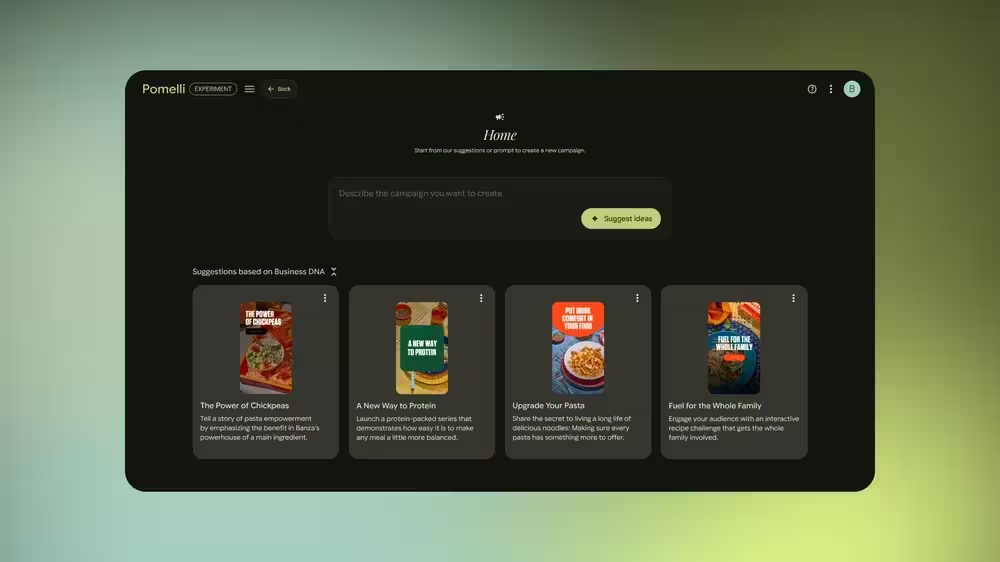
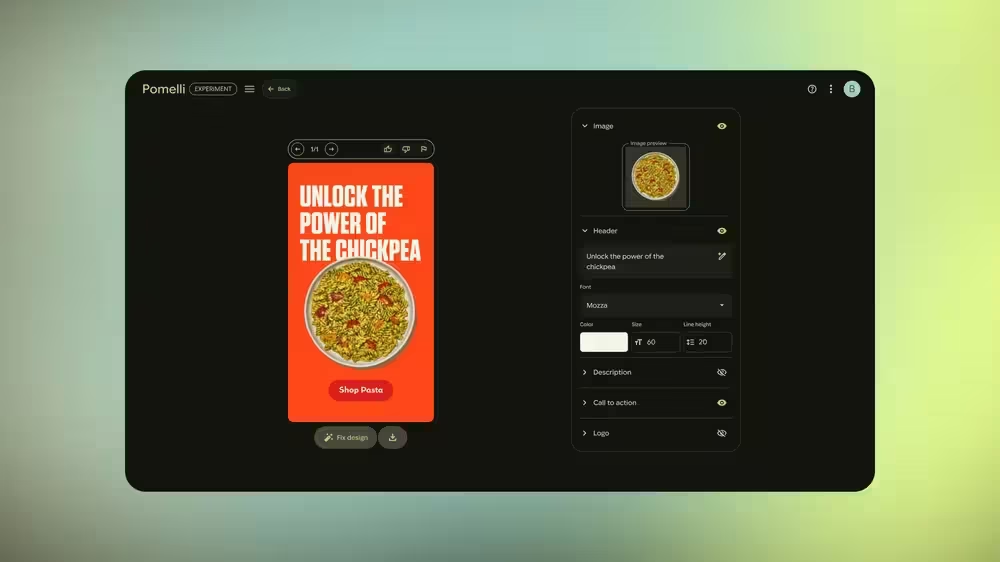
Creative assistance vs full automation
The duel between Canva and Pomelli reflects a broader debate: how far should AI take over the creative process? Canva keeps humans in control of design decisions, while Pomelli hands over nearly everything to the machine. The first sees AI as a co-pilot, the second as an autonomous engine. These two philosophies define a future where the line between creative assistance and full automation grows increasingly thin.
Pomelli AI: the experiment from Google Labs and DeepMind
A tool built for small and medium businesses
As TechRadar explains, Pomelli targets small and medium businesses (SMBs) often lacking in-house marketing teams. Its goal is simple: to automate brand consistency across all digital channels without requiring a graphic designer.
The tool features a minimalist interface and generates content for Instagram, LinkedIn, X, Facebook, and showcase websites. Google aims to democratize AI marketing, making it accessible without technical expertise.
The AI engine: Business DNA and automatic generation
At the heart of Pomelli lies its Business DNA engine. In 30 to 90 seconds, the AI analyzes a website, extracts its design language, and generates a set of ready-to-publish posts. According to Skywork.ai, Pomelli stands out for its speed and its ability to understand a brand’s tone without manual adjustments.
Analysts at The AI Economy believe that Pomelli could integrate Google’s Gemini (text), Imagen (image), and Veo (video) models. This approach illustrates Google’s intent to unify its multimodal AI ecosystem for practical applications in marketing automation and visual content generation.

A still limited beta version
However, Pomelli remains an experimental prototype, currently available only in English and in four countries (United States, Canada, Australia, and New Zealand). There is no API integration or direct publishing yet; users must export content manually. According to Promptus.ai, these limitations are typical of Google Labs projects, often launched to test concept viability before scaling up.
Canva: a mature creative ecosystem
A complete and collaborative platform
Unlike Pomelli, Canva has reached full product maturity. It now offers a collaborative workspace where multiple users can create, comment, and publish in real time. Its many integrations (Google Drive, Meta, TikTok, Slack, etc.) make it an all-in-one solution for marketing teams seeking workflow efficiency.
This collective approach contrasts with Pomelli’s simplicity and individual focus. Canva remains the preferred choice for teams that need to harmonize design and communication strategies.
The rise of generative AI within Canva
Canva anticipated the generative AI wave early. Its Magic Studio suite combines several AI features, Magic Write, Magic Eraser, Magic Edit, Magic Design, delivering a massive productivity boost while preserving customization. According to TechCrunch, one-fourth of Canva creations in 2025 already come from AI-powered tools, proof of widespread adoption. The key difference: in Canva, AI acts as an intelligent assistant, not a creative replacement.
A strategy of continuous evolution
Canva keeps expanding its feature set and partnerships, reinforcing its position as a leader in controlled design automation. Its freemium model combines accessibility with scalable paid tiers, ensuring long-term growth. By contrast, Pomelli remains a free experimental project, with no guarantees of long-term continuity, a telling contrast between proven stability and experimental innovation.
Comparison: Pomelli / Canva / Jasper
Comparison table: simplicity, automation, integration
| Criterion | Pomelli AI (Google Labs) | Canva | Jasper AI |
|---|---|---|---|
| Ease of use | Very high, minimalist and fully automated interface | High, requires some manual configuration | Moderate, text-focused interface |
| Automation | High (site analysis and campaign generation) | Medium (guided AI assistance) | High (prompt-based text generation) |
| Integration | Low (no API or direct publishing) | Strong (integrations with Meta, Google Drive, etc.) | Excellent (HubSpot, WordPress, API) |
| Target users | SMBs without marketing teams | Designers, freelancers, collaborative teams | Marketers, content agencies |
| Pricing (2025) | Free (beta) | Freemium | Paid |
Target markets and maturity levels
Pomelli appeals to businesses wanting to outsource creativity to AI with minimal human input. Canva remains the choice for users who prefer to control their visual production while leveraging smart assistance. Jasper, meanwhile, occupies an adjacent niche focused more on automated text generation than on design. Pomelli is therefore not yet a direct competitor but rather a laboratory experiment on the path to fully automated marketing.
Strategic confrontation: experience vs experimentation
Product experience: a decade of advantage for Canva
In terms of user experience, Canva enjoys a ten-year head start. The platform is refined, intuitive, and supported by a global community. Pomelli, on the other hand, remains limited and sometimes rigid, constrained by algorithmic interpretation. The contrast is clear: Canva is a product, Pomelli is a prototype.
Pomelli, a large-scale experiment for DeepMind
For DeepMind, Pomelli serves as a real-world testbed. By merging text, image, and brand identity, it showcases potential synergies between Gemini, Imagen, and Veo models. As Analytics Insight notes, Pomelli “illustrates Google’s willingness to explore concrete applications of its generative AI technologies before any commercial launch.”
Toward a 100% automated marketing future?
Beyond the technical duel, this debate touches on a deeper question: the future of AI-powered marketing. The full automation promised by Pomelli offers unmatched speed, but raises concerns about content standardization and the loss of human style. Canva, maintaining a balance between AI automation and human input, represents a more sustainable model. The real challenge ahead will be finding the right balance between algorithmic efficiency and human creativity.
Conclusion – Can Pomelli truly challenge Canva?
Between Canva’s proven experience and Pomelli’s experimental boldness, this duel illustrates two complementary paths in AI-driven design. Pomelli is not yet a revolution, but it signals a transformation, the industrialization of marketing creation. Canva, with its stability and community, remains the benchmark for AI-assisted design.
The question is no longer whether AI will transform creation, but how far it will go. Pomelli tests the limits of machine autonomy, while Canva demonstrates that AI serving human creativity remains the most adopted model. The future of design will likely emerge at the crossroads of these two approaches.
Also read: Pomelli AI: Google bets on automated marketing for small businesses
Sources and references
Tech media
- Analytics Insight – Nov 3, 2025
- TechRadar – Nov 3, 2025
- ZDNet – Oct 29, 2025
- Skywork.ai – Nov 1, 2025
- Promptus.ai – Nov 2, 2025
- The AI Economy – Oct 27, 2025
Companies
- Canva – Collaborative design platform
- Google Labs – Pomelli AI experiment
- DeepMind – Google’s AI research division
Institutions and analysis
- StartupHub.ai – Oct 27, 2025
- TechCrunch – 2025, internal Canva data on AI usage
Official sources
- Google Labs Blog – Oct 27, 2025
Your comments enrich our articles, so don’t hesitate to share your thoughts! Sharing on social media helps us a lot. Thank you for your support!
